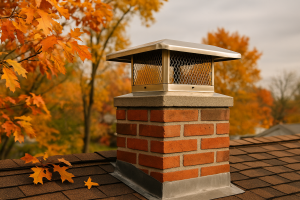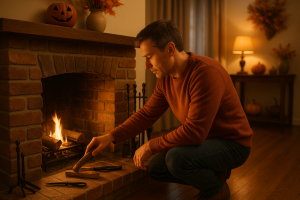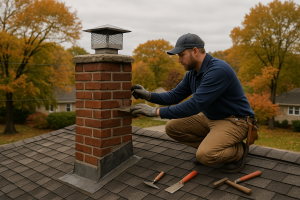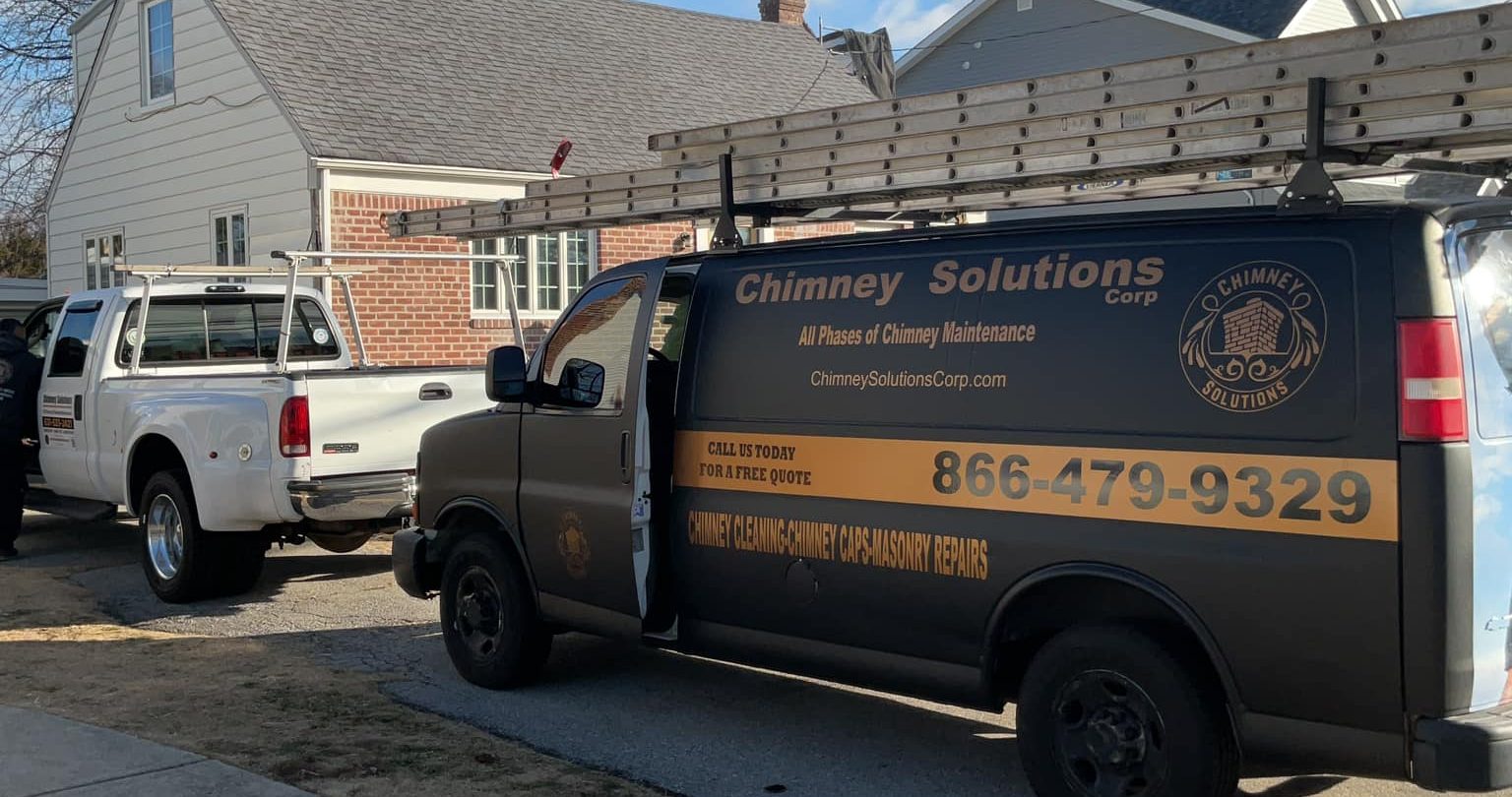Step-by-Step Guide to Chimney Inspections: What to Expect
A well-maintained chimney is crucial for the safe and efficient operation of your fireplace or heating appliance. Regular chimney inspections help identify potential issues, prevent structural damage, and ensure the longevity of your chimney system. This comprehensive guide will walk you through the different levels of chimney inspections, what to expect during each, and the importance of regular maintenance.
Understanding Chimney Inspection Levels
The National Fire Protection Association (NFPA) defines three distinct levels of chimney inspections, each tailored to specific circumstances and needs.
Level 1: Basic Inspection for Regular Use
A Level 1 inspection is the most common and is suitable when no changes have been made to your heating system, and you plan to continue using it as usual. During this inspection, a qualified professional conducts a visual examination of the readily accessible portions of the chimney’s interior and exterior. This includes checking the chimney flue, fireplace components, and ensuring there are no obstructions or combustible deposits like creosote buildup. The primary goal is to verify that the chimney structure is sound and free from apparent defects.
Level 2: Detailed Inspection for System Changes or Events
A Level 2 inspection becomes necessary when there have been changes to your heating system, such as switching fuel types, installing a new appliance, or after an external event like a chimney fire or severe weather. This comprehensive inspection includes all aspects of a Level 1 inspection, plus the examination of accessible areas like attics, crawl spaces, and basements. Additionally, it often involves video scanning or other special tools to assess the internal surfaces and joints of the flue liner, ensuring no hidden damage or potential hazards exist.
Level 3: Comprehensive Inspection for Suspected Serious Issues
Level 3 inspections are the most extensive and are conducted when serious hazards are suspected. This level may require the removal of certain components of the building or chimney structure to gain access to areas suspected of hidden problems. It’s typically recommended when a Level 1 or Level 2 inspection suggests a serious issue that cannot be fully evaluated without invasive measures.
The Importance of Regular Chimney Inspections
Regular chimney inspections are vital for several reasons:
- Preventing Chimney Fires: Creosote, a flammable substance resulting from burning wood, can accumulate on chimney walls. If not addressed, this buildup poses a significant fire hazard.
- Ensuring Structural Integrity: Over time, factors like weather events and regular use can lead to structural damage. Routine inspections help identify issues like cracks or deterioration in the chimney structure, allowing for timely repairs.
- Detecting Obstructions and Blockages: Blockages from debris, animal nests, or soot can impede proper ventilation, leading to potential safety hazards, including carbon monoxide buildup.
- Maintaining Efficient Operation: An efficiently operating chimney ensures that your fireplace or heating appliance functions optimally, providing adequate heat and reducing energy costs.
According to the National Fire Protection Association (NFPA), regular chimney inspections are essential to preventing fires caused by creosote buildup.
What to Expect During a Chimney Inspection
Understanding the inspection process can help you prepare and know what to anticipate.
Initial Assessment
The inspection begins with a visual examination of the chimney’s exterior. The inspector looks for signs of damage, such as cracks in the masonry, loose bricks, or deteriorated mortar joints. They also assess the condition of the chimney cap and crown to ensure they are intact and functioning properly.
Interior Examination
Inside the home, the inspector examines the fireplace or stove, checking components like the firebox, damper, and smoke chamber. They look for signs of wear, rust, or damage that could affect the safe operation of the appliance.
Flue Inspection
The chimney flue is inspected for creosote buildup, blockages, or damage. Depending on the inspection level, this may involve using specialized tools or video equipment to get a clear view of the flue’s interior surfaces.
Evaluation of Venting System
The inspector ensures that the venting system is properly configured and free from obstructions, allowing for the safe expulsion of combustion gases. This includes checking the connections between the appliance and the chimney.
Chimney Inspection Costs
The cost of a chimney inspection varies based on the inspection level and other factors:
- Level 1 Inspection: Typically ranges from $100 to $250.
- Level 2 Inspection: Generally costs between $250 and $600, especially if specialized tools like video scanning are used.
- Level 3 Inspection: Due to its invasive nature, costs can be significantly higher and vary widely depending on the extent of the inspection and necessary repairs.
Investing in regular inspections can save money in the long run by identifying and addressing minor issues before they escalate into costly repairs.
Choosing a Qualified Chimney Professional
Hiring the right chimney professional isn’t just about getting a job done—it’s about protecting your home, your family, and your peace of mind. A chimney inspection or chimney cleaning performed by an unqualified individual can lead to structural issues, buildup of creosote, and even dangerous events like carbon monoxide poisoning or chimney fires. That’s why it’s crucial to choose a qualified chimney technician with the right credentials and experience.
Certification and Training
Look for professional chimney sweeps who are certified by recognized institutions like the Chimney Safety Institute of America (CSIA). Certification ensures the technician is trained in the latest safety standards, proper chimney inspection checklists, maintenance of chimneys, and solid fuel-burning appliances. They are also equipped to identify and address black, tar-like substance cracks, signs of water damage, and even smoke backup issues during an annual chimney inspection.
Experience and Reputation
Experience matters when it comes to evaluating chimney crowns, chimney liners, and visible damage to the chimney exterior. An experienced chimney sweep company understands the nuances of different chimney sizes, masonry fireplaces, and types of inspection—whether it’s a level-one chimney inspection or a more advanced comprehensive inspection. These experts can assess structural concerns, identify water penetration early, and offer recommendations for repairs that align with your safety and budget. Look for professional chimney sweeps who are certified by recognized institutions like the Chimney Safety Institute of America (CSIA).
Check online reviews and testimonials, and don’t hesitate to ask for references. A trustworthy professional will have a history of reliable service, positive customer feedback, and a reputation for thorough fireplace inspections and chimney cleaning services.
Insurance, Licensing & Legal Protections
Always verify that the chimney inspector is licensed and insured. Insurance not only protects your home in case of accidental damage during the service, but it also confirms the business operates legally. Professionals will also provide detailed reports, outlining all findings from the visual inspection, including amounts of creosote, blockage from debris, or chimney over time wear-and-tear. This level of accountability gives homeowners confidence in the results and any necessary proactive approach to maintenance.
Equipment and Tools Used
Professional technicians will arrive with proper tools, including drop cloths, cameras, special equipment, and an assortment of tools for precise inspection and cleaning. These tools are essential for reaching accessible chimneys, evaluating chimney flue conditions, and identifying hot spots where combustible deposits may present a risk. A chimney expert will also inspect for bird nests, unusual odors, or signs of poor air quality, all of which can be hidden threats in a dirty chimney.
Scheduling and Transparency
A reputable provider should offer clear communication about the appointment process, including an accurate appointment time slot, service expectations, and inspection details. They should also walk you through their findings and explain any additional issues, safety concerns, or the biggest risks to be aware of—particularly if your home includes gas fireplaces, a wood stove, or an unlined chimney.
Bonus Tip: Preventative Maintenance = Savings
Hiring a qualified chimney sweep for regular chimney sweeping and annual chimney cleaning can prevent extensive water damage, operation malfunction, or even building fires. Routine care ensures your heating equipment and fireplace services run safely and efficiently—saving you from costly emergency repairs and insurance claims related to structural damage or bad weather impacts.
Conclusion
Regular chimney inspections are a critical component of home maintenance, ensuring the safe and efficient operation of your fireplace or heating appliance. By understanding the different levels of inspections and what to expect during the process, homeowners can make informed decisions and address potential issues proactively. Remember to engage a qualified professional for these inspections to maintain the integrity and safety of your chimney system.
For more information on chimney inspections and maintenance, visit the Chimney Safety Institute of America.



